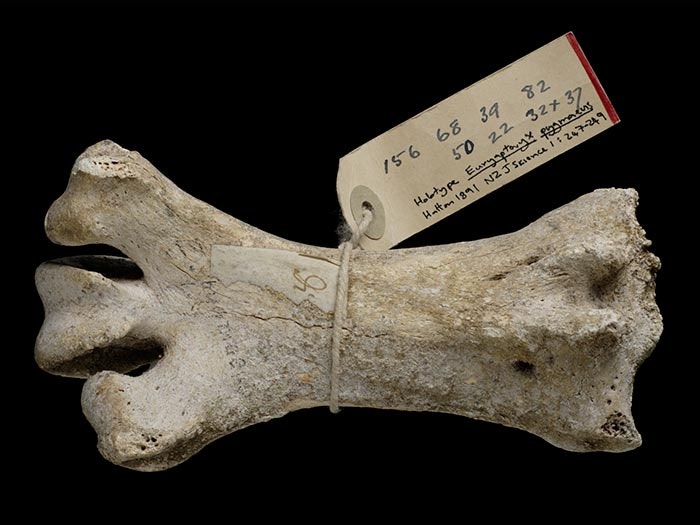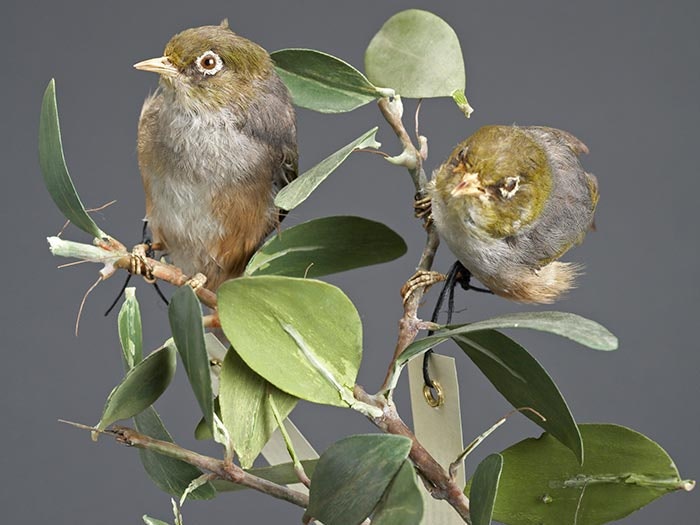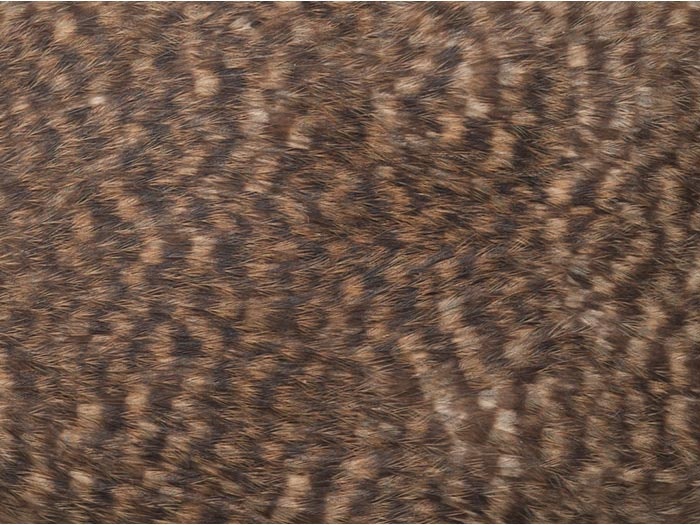
Tuhinga 14, 2003
EAN 11734337
Jump to:
Resolution of the status of the taxon Apteryx maxima
Toki Niu Hila: making Tokelau adzes and identity in New Zealand
Menepo: the recent evolution of a traditional wood sculpture from Santa Cruz in the Solomon Islands
Te Papa and New Zealand’s Indian communities – a case study about exhibition development
Resolution of the status of the taxon Apteryx maxima
Ricardo Palma, Trevor Worthy, and Alan J D Tennyson
ABSTRACT: We investigate the history, availability, and validity of the nominal taxon Apteryx maxima. We conclude that Apteryx maxima Sclater & Hochstetter, 1861, is an available name, and a senior synonym of Apteryx haastii Potts, 1872. However, we propose that the junior synonym (Apteryx haastii) be regarded as the valid name (nomen protectum) for the species known as the great spotted kiwi, while relegating Apteryx maxima to be an invalid name (nomen oblitum), in accordance with Article 23.9 on Reversal of precedence as established in the Fourth Edition of the International Code of Zoological Nomenclature published in 1999. Also, we designate a neotype for Apteryx maxima.
Resolution of the status of the taxon Apteryx maxima (1.43 MB)
Toki Niu Hila: making Tokelau adzes and identity in New Zealand
Sean Mallon with Kupa Kupa and Jack Kirifi
ABSTRACT: This article examines the manufacture of a set of Tokelau toki (hafted adzes) in New Zealand. The toki are usually thought of as functional tools, but they are also a medium through which the politics of relationships, knowledge transfer, and cultural identity can be negotiated. This analysis focuses on cultural production processes outside the usual public forums of galleries, literature, dance, and performance. The manufacture and documentation of these toki provide insights into the disjunctions of cultural meaning in transnational contexts, and considers the implications these disjunctions have for museums and their approach to authoritative ethnographic representation.
Toki Niu Hila: making Tokelau adzes and identity in New Zealand (2.21 MB)
The genus Trigonobothrys in New Zealand and a redescription of Achaearenea blattea (Theridiidae: Araneae)
Brian M Fitzgerald and Philip J Sirvid
ABSTRACT: Three New Zealand species of spiders that have been placed in the genus Dipoena Thorell, 1869, are reviewed and shown to belong to other genera. The male of a previously undescribed but illustrated species of Dipoena from New Zealand is shown to belong to Trigonobothrys Simon, 1889, and to be conspecific with Phycosoma oecobioides O.P. Cambridge, 1879, known from the female holotype only. The new combination Trigonobothrys oecobioides (O.P. Cambridge, 1879) is proposed, as is the new synonymy of Phycosoma O.P. Cambridge, 1879 under Trigonobothrys. The female of T. oecobioides is redescribed, and the male is described for the first time. Theridium blatteusUrquhart, 1886, currently placed in the genus Dipoena, is shown to belong to Achaearanea Strand, 1929. Another species, Atkinsonia nana O.P. Cambridge, 1879, had been placed in Dipoena, then transferred to Euryopis Menge, 1868, and we agree with this placement.
The genus Trigonobothrys in New Zealand and a redescription of Achaearenea blattea (Theridiidae: Araneae) (1.24 MB)
Menepo: the recent evolution of a traditional wood sculpture from Santa Cruz in the Solomon Islands
Rhys Richards
ABSTRACT: This paper traces the recent evolution of ‘menepo’, a traditional free-standing wooden statue from Santa Cruz in the eastern Solomon Islands. Following their recent development by David Kio of Honiara, menepo-like sculptures have evolved into a new genre of contemporary carvings that are becoming national icons across the Solomon Islands.
Menepo: the recent evolution of a traditional wood sculpture from Santa Cruz in the Solomon Islands (639.70 KB)
Takaka Fossil Cave - a stratified Late Glacial to Late Holocene deposit from Takaka Hill, New Zealand
Trevor H Worthy and David Roscoe
ABSTRACT: A rich terrestrial vertebrate fauna from the pitfall trap deposit of Takaka Fossil Cave on Takaka Hill, South Island, New Zealand, is described. Radiocarbon ages on moa bones bracket the onset of sedimentation in the site to between 12 361 and 11 354 14C yrs BP. Euryapteryx geranoides was in the Late Glacial moa fauna that predates the onset of sedimentation in the site, but was absent in younger faunas. The moa Anomalopteryx didiformis was present in the Late Glacial fauna as well throughout the Holocene. A total of 1633 bones from 25 species of birds and a further 895 bones of 154 individuals of vertebrates other than birds (two species of frog, one tuatara, three lizards, two bats, and a rat) were identified in the total recovered fauna. A well-preserved partial skeleton of Haast’s eagle (Harpagornis moorei) of Late Glacial age had severe arthritis. Unusually small specimens of Euryapteryx were morphologically diagnosed as E. geranoides, and confirmed as such by mitochondrial DNA analysis. The molluscan fauna contained two aquatic, troglobitic hydrobiids and 29 taxa of land snails. While there is little change in species diversity between lower and upper layers, there are marked changes in relative abundance of some taxa that suggest the environment was drier in the early and middle Holocene than it was in the Late Holocene.
Takaka Fossil Cave - a stratified Late Glacial to Late Holocene deposit from Takaka Hill, New Zealand (2.83 MB)
Te Papa and New Zealand’s Indian communities - a case study about exhibition development
Stephanie Gibson
ABSTRACT: The Museum of New Zealand Te Papa Tongarewa (Te Papa) has a mandate to represent the diverse cultures of New Zealand. Different migrant communities are profiled in the Museum’s Community Gallery every two years. The exhibition development process relies heavily on the relationship between the Museum’s exhibition team and a voluntary Community Advisory Group. The third community exhibition to be held in the Community Gallery is about the Indian communities in New Zealand, called Aainaa – reflections through Indian weddings. Issues regarding this project are explored as a case study on the relationship between museums and communities.
Te Papa and New Zealand’s Indian communities - a case study about exhibition development (2.25 MB)

